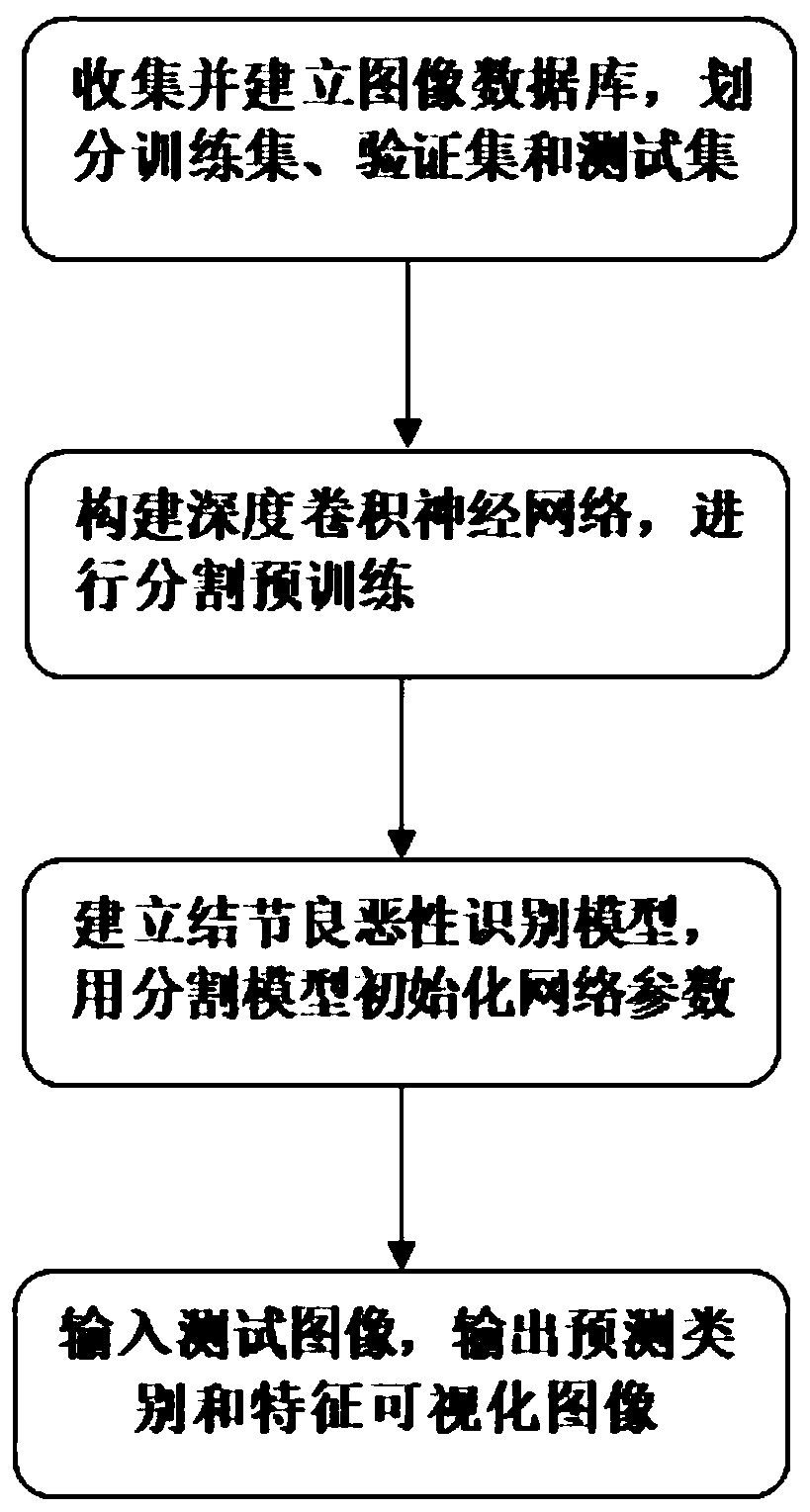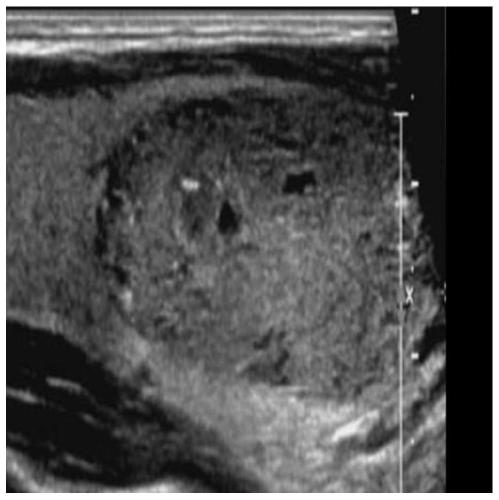Ultrasonic thyroid nodule benign and malignant feature visualization method based on deep learning
A thyroid nodule and deep learning technology, applied in the field of medical image processing, can solve problems such as false negative results, false positive results, inaccurate results, etc., to achieve better analysis and improve the success rate
- Summary
- Abstract
- Description
- Claims
- Application Information
AI Technical Summary
Problems solved by technology
Method used
Image
Examples
Embodiment Construction
[0055] The present invention will be further described in detail below in conjunction with the accompanying drawings and specific embodiments. The examples can enable those skilled in the art to understand the present invention more comprehensively, but do not limit the present invention in any way.
[0056] The present invention adopts a feature visualization method for identifying benign and malignant thyroid nodules based on a deep convolutional neural network, such as figure 1 As shown, the specific steps are as follows:
[0057] Process 1, collect and establish image database, divide training set, verification set and test set
[0058] (1) Collect about 50,000 pieces of ultrasound data containing thyroid nodules, taking the case as the unit, and each case can contain multiple ordinary B-ultrasound images of different nodule sections; the cases should come from different regions and hospitals, and different ultrasound machines and operating physicians. If there are surg...
PUM
 Login to View More
Login to View More Abstract
Description
Claims
Application Information
 Login to View More
Login to View More - R&D
- Intellectual Property
- Life Sciences
- Materials
- Tech Scout
- Unparalleled Data Quality
- Higher Quality Content
- 60% Fewer Hallucinations
Browse by: Latest US Patents, China's latest patents, Technical Efficacy Thesaurus, Application Domain, Technology Topic, Popular Technical Reports.
© 2025 PatSnap. All rights reserved.Legal|Privacy policy|Modern Slavery Act Transparency Statement|Sitemap|About US| Contact US: help@patsnap.com



